This coat from Liverano & Liverano in Florence has had a bit of an after life, being imitated in this tweed a fair bit, as well as spurring some to have the same coat from Liverano (despite the high cost).
It remains one of my absolute favourite pieces of bespoke. It has a shape and a style I’ve never really seen ready-made, and the PS Harris Tweed material works surprisingly well despite its weight.
As I write this piece, in fact, I’ve just come from a fitting with Nunzio Pirozzi, the respected Neapolitan tailor, about the coat. I was wearing it to the appointment, he admired the way the back was made, and we got into a conversation about its heritage. “You’re never too old to learn something new,” he said (I was told) in Italian.
Goes to show how different these various styles are, and how useful it is to talk about them all in this Style Breakdown series.
House: Liverano & Liverano
Address: Via Dei Fossi 43R, Florence
Site: liverano.com
Cutter: Antonio Liverano
Price of the coat (at time of writing): €14750 (incl VAT)
Starting price of a two-piece suit (at time of writing): €9775 (incl VAT)
Let’s look at the back of this coat first. As we mentioned in the first article in this series, on my Ciardi ulster, styles of coat vary quite a bit between tailors, and not always in the way you’d expect.
Despite Naples’ reputation for soft and easy tailoring, the Ciardi was quite detailed and tailored in the back. This Liverano coat, from the Florentine tradition, is the opposite: it’s simply a big piece of cloth, folded into one long pleat down the length of the back, and stitched down underneath the belt.
It’s how a lot of military great coats used to be made. All that material was held in place just by the belt, and you could undo the belt to let it all fan out, creating a big blanket a soldier could sleep under or otherwise wrap themselves up in.
With modern versions just using the belt would probably be too messy, but even with a hidden stitch under the belt, there is a freedom and flow to this Liverano coat. It’s messier than the Ciardi, as the photography shows, but it’s also easier to wear over bulky clothing and there is a particular, insouciant joy in wearing it.
The style might be a reason (alongside the tweed material) that I find this coat works well with jeans, where a lot of tailored overcoats don’t.
It’s also in keeping with the Florentine attitude to tailoring, which is often one of rustic elegance: clothes that are very well made, with lots of hand work, but in ways that make them stronger rather than more decorative. Ones that can be worn on the farm as well as the city, but in their way are just as well-made as anything from Milan.
The way the shoulder is made also expresses the same philosophy. Although it doesn’t have the ‘spalla camicia’ of Ciardi, there is actually less wadding than the Neapolitan coat, and the material drops very naturally from the shoulder. It’s a simple, easy style.
I should say, by the way, that one of the disadvantages of such a light material (15/16oz) is that it creases more, particularly in folds along the weave lines. Although the photograph above exaggerates this slightly, that’s what you can see in those lines down the sleeve.
I should also remind readers that with all the photos, I deliberately don’t press anything in advance but shoot it naturally, after many weeks of wear. I wore this to the shoot, on the London Underground, and this is how it looked afterwards.
In many other ways the Liverano style is similar to Ciardi. The shoulder width is similar, as is the buttoning point, as is the back length. The biggest other difference is probably the angle of the gorge, as we alluded to last time.
The gorge is where the collar and lapel meet. An ulster coat is defined by the roughly horizontal line of the top of the lapel, unlike the upwards point of a peak. But, some ulsters point subtly down, others are flat, others a little up. It varies but it is quite a visual cue and helps define the overall style.
While the angle of the lapel is similar on both coats, the Ciardi’s collar points slightly downwards, while the Liverano runs slightly upwards. As a result, the Liverano has a larger gap between the two.
The Liverano collar is also made of two pieces, with a stand in the back, unlike the Ciardi, which means it stands up a little more easily. I like wearing it in this manner particularly, and have shown some shots in that style.
A last detail I like is the turnback cuff. I’d never noticed the difference, to be honest, until the tailor I was working with on this series highlighted it.
The Liverano cuff has its seam on the outside of the arm, rather than the inside. This means you can see it, it’s not hidden, which some tailors might dislike as it’s not as neat. But it also feels more natural, as there is a seam anyway on the outside of the sleeve. It looks like you might actually have folded the sleeve back.
A useful way to think of these different approaches is perhaps as different tailoring languages. No language is right or wrong, but they express things in different ways. And just as importantly, each is consistent, coherent.
This is where tailors can get into trouble when try to mix styles, or change their style, I think. It’s a little like someone with a clipped British accent suddenly using Californian slang: it jars, it sounds odd. All languages evolve of course, but they tend to do so naturally and over some length of time. The best tailoring traditions have done the same thing.
For more details on this coat, see the original review here. You can also see all details on Liverano on their brand page.
Style breakdown:
- Shoulder width: 6¾ inches
- Shoulder padding: Light
- Sleevehead: Natural
- Lapel width: 6 inches (DB ulster, so flat)
- Gorge line: Horizontal
- Collar width (at gorge): 3 inches
- Gorge height: 3½ inches
- Outbreast pocket height: 12 inches
- Buttoning point: 19½ inches
- Wrap: 4½ inches
- Back length: 47 inches
Other clothes shown:
Coat shown below with reader Ben, the subject of our recent profile article here
DMTBeautySpot
via https://dmtbeautyspot.com
Simon Crompton, DMT.NEWS, DMT BeautySpot,
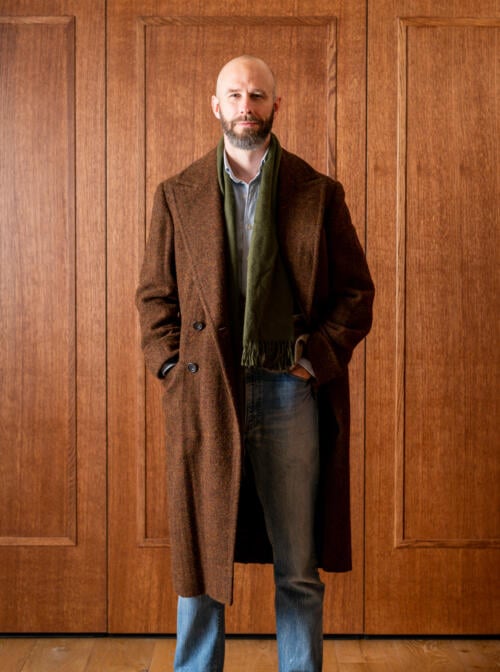
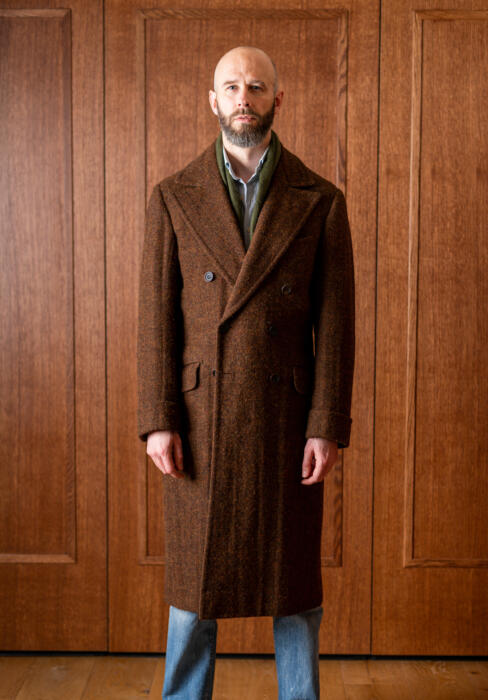
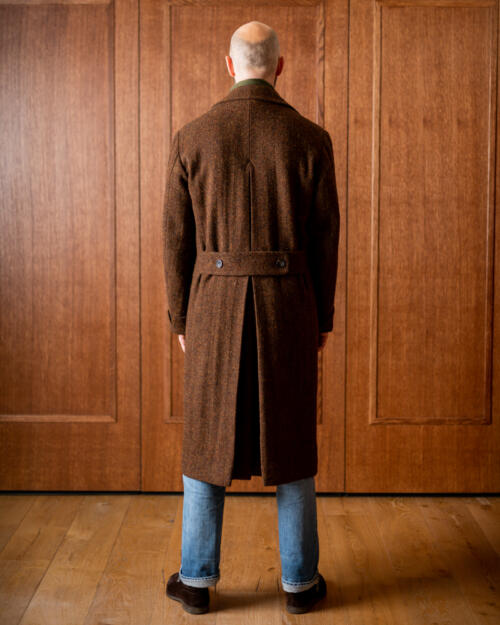
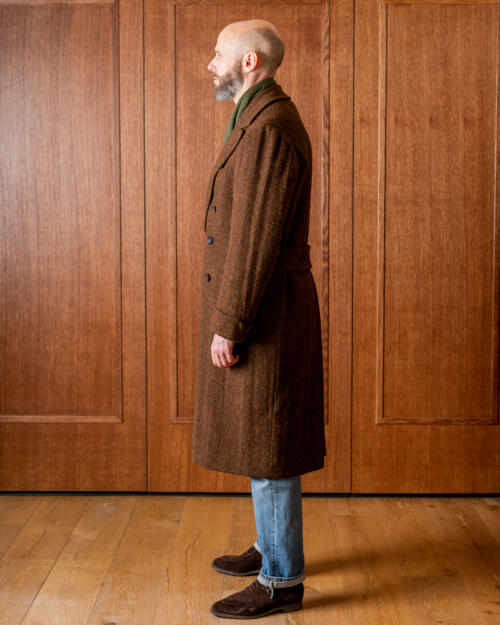
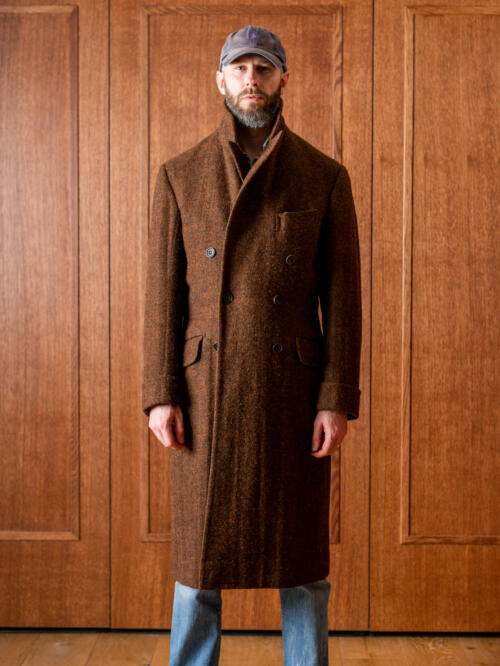
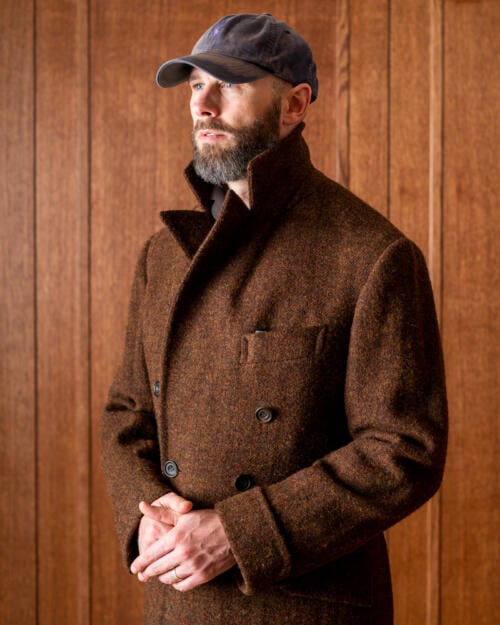
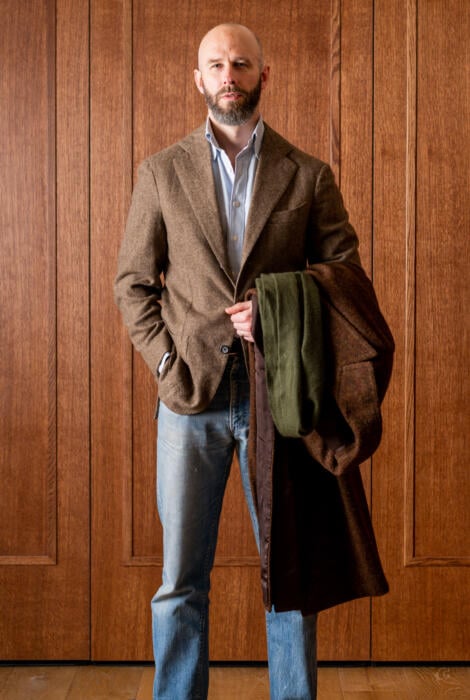
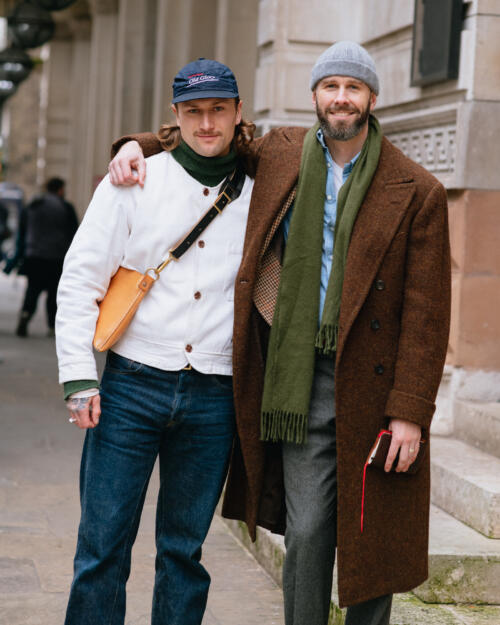


0 comments